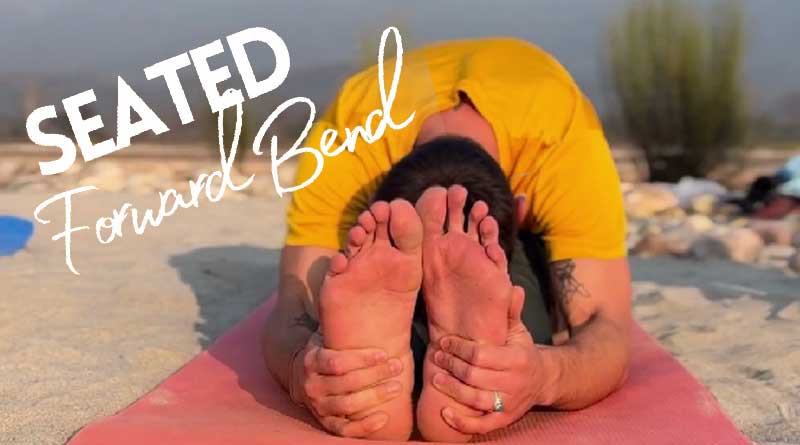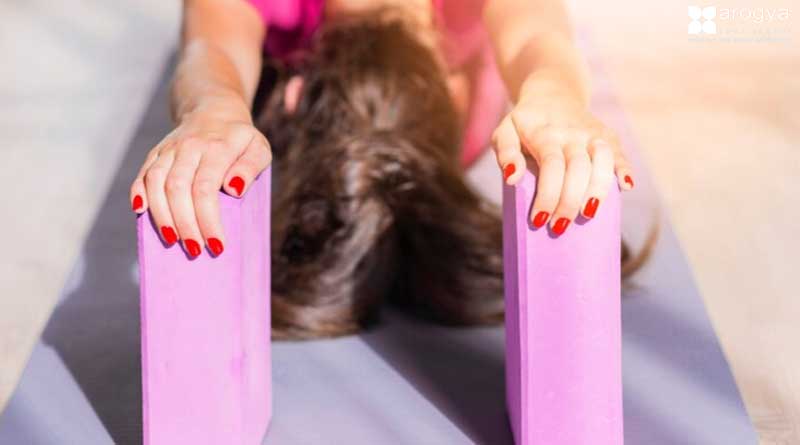A Seated forward bend, also known as a forward fold, is a yoga pose that involves bending the torso forward towards the legs, with the goal of stretching the hamstrings and lower back. To perform this pose, you can start standing with your feet hip-width apart and your hands on your hips. Then, as you exhale, begin to hinge forward from your hips, keeping your back flat and your legs straight. You can reach towards your toes or shins, or place your hands on the floor if you can reach it.
It’s important to keep your knees slightly bent to protect your lower back and to avoid rounding your back. You can hold the pose for several breaths, and then slowly release as you inhale and come back to standing. Over time, with practice and flexibility, you may be able to reach deeper into the forward bend. As with any yoga pose, listen to your body and only go as far as feels comfortable and safe for you.
How to do Seated Forward Bend, Paschimottanasana
Paschimottanasana, a pose in yoga that requires a forward bend, is one of the best for stretching the legs and back muscles. Here are the steps to perform Paschimottanasana.
- Place your feet on the ground and stretch your legs out in front.
- Take a deep breath and raise your arms towards the ceiling.
- Inhale and begin to lift your hips forward, while keeping your back straight.
- Try to reach forward and grab your toes, shins, or toes with your hands. To extend your reach, a towel or strap can be used if you are unable to reach your toes.
- Continue to exhale and fold forward. This will bring your chest closer to your knees, and stretch your legs and back muscles.
- You can hold the pose for several minutes, focusing on the breath and relaxing into it.
- Inhale, then slowly lift your upper body up until you are free.
Throughout the entire pose, keep your neck straight and your spine relaxed. To support your body if you feel any discomfort, props like blankets and blocks can be used to help. You should listen to your body and only do what feels safe and comfortable for you.
Health Benefits of Seated Forward Bend Paschimottanasana
Paschimottanasana, also known as the seated forward bend, is a yoga pose that offers a range of physical and mental benefits. Some of the health benefits of this pose include:
- Stretches the muscles of the back and legs: Paschimottanasana stretches the hamstrings, calves, and lower back muscles, which can help improve flexibility and reduce stiffness in these areas.
- Calms the mind: The deep forward bend in Paschimottanasana can have a calming effect on the mind and body. This can be helpful in reducing stress, anxiety, and fatigue.
- Improves digestion: The forward bend in Paschimottanasana massages the abdominal organs, which can help stimulate digestion and improve the digestive system.
- Increases circulation: By stretching the muscles in the legs and back, Paschimottanasana can help improve circulation and boost energy levels.
- Relieves menstrual discomfort: For women who experience menstrual discomfort, the seated forward bend can help relieve symptoms such as cramping and bloating.
It’s important to note that while Paschimottanasana has many benefits, it should be performed with caution and under the guidance of a qualified yoga instructor if you have any injuries or medical conditions. Additionally, it’s important to listen to your body and only go as far as feels comfortable and safe for you.
Common Mistakes in Paschimottanasana?
Paschimottanasana, or the seated forward bend, is a yoga pose that can be challenging for some people, especially those who are less flexible. Here are some common mistakes to be aware of and avoid when practicing this pose:
- Rounding the back: When bending forward, it’s important to keep the spine straight and avoid rounding the back. This can put undue stress on the lower back and compromise the benefits of the pose.
- Pulling the head towards the knees: It’s important to keep the neck relaxed and the head aligned with the spine. Avoid pulling the head towards the knees, as this can strain the neck and shoulders.
- Locking the knees: Keep the knees slightly bent throughout the pose to avoid locking the knees and putting stress on the joints.
- Pushing beyond your limits: It’s important to listen to your body and only go as far as feels comfortable and safe for you. Avoid pushing yourself too far and risking injury.
- Using momentum: The forward bend should be performed with control and awareness. Avoid using momentum or swinging to get into the pose, as this can compromise the benefits and increase the risk of injury.
By avoiding these common mistakes, you can practice Paschimottanasana with greater ease and receive the maximum benefits of the pose. If you’re new to yoga or have any medical concerns, it’s best to consult with a qualified yoga instructor for guidance and personalized modifications.



